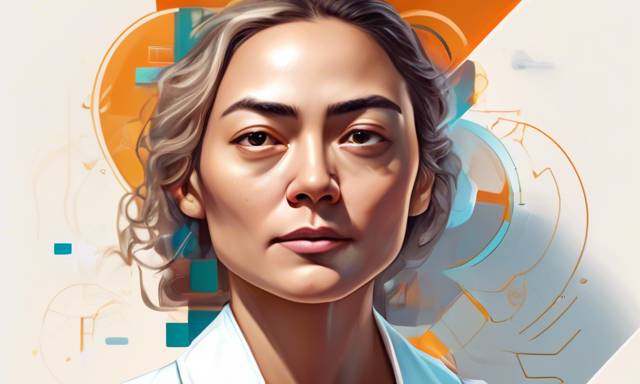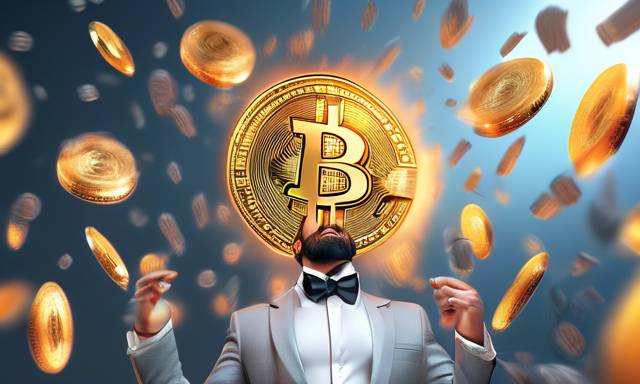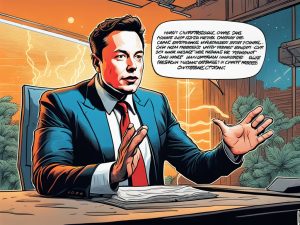Exploring the Centralization Debate Around Solana 🚀
The ongoing discussion surrounding decentralization in the cryptocurrency realm has intensified, particularly in relation to Solana. This year, the blockchain platform has found itself under scrutiny due to past connections with the defunct crypto exchange, FTX, and its notorious founder, Sam Bankman-Fried. As Solana’s development team seeks to mitigate concerns about centralization and improve the network’s reliability, understanding this conversation is essential for anyone interested in the dynamic world of blockchain technology.
The Background of the Centralization Issue 🔍
Concerns regarding centralization in Solana are not a new phenomenon. These discussions gained traction when the platform became closely linked to FTX, a platform that has since collapsed, along with its founder now serving a lengthy prison sentence for fraud. Bankman-Fried was a prominent supporter of Solana, leading some within the community to refer to its cryptocurrency, SOL, as a “Sam coin.” Such associations have only fueled worries about the network’s decentralization.
Solana Developers Respond to Criticism 🛠️
In response to these concerns, the developer community behind Solana has taken proactive steps to address the narrative of centralization. The team asserts that while challenges exist, they have made significant progress in promoting decentralization within the network. A critical upcoming initiative is the launch of Firedancer, a new validator client designed by Jump Crypto.
- The Firedancer project aims to:
- Enhance decentralization by introducing diverse validator options.
- Mitigate past technical difficulties, especially those related to downtime.
Supporters of Solana argue that these changes are vital for the platform’s future resilience and reliability. The Firedancer client is presented as a means to improve the network’s overall architecture, making it less susceptible to the pitfalls that have plagued other blockchain infrastructures.
Anatoly Yakovenko’s Insights 💬
Anatoly Yakovenko, one of the co-founders of Solana, has addressed the decentralization debate directly through social media. His statements indicate that he believes the criticisms aimed at Solana are often rooted in subjective interpretations rather than factual assessments. Yakovenko recently tweeted:
“As usual, Solana is decentralized only by objectively measurable metrics, and centralized across all the other ones.”
This comment suggests that the Solana team perceives the centralization debate as influenced by varying perspectives, not merely concrete metrics. This response illustrates the complexity of the discussion and the importance of empirical data in shaping opinions about decentralization.
Community Discourse and Perspectives 🗣️
The dialogue surrounding Solana’s structure is vibrant, often unfolding on social media platforms. The community expresses varied views, with some defending the blockchain’s decentralization metrics while others continue to raise flags about potential centralization risks. Engaging in these conversations is crucial for anyone who is invested in the direction of blockchain technology and its implications for decentralized finance.
- Key perspectives in the ongoing discourse include:
- Defending Solana’s progress toward greater decentralization.
- Critiquing the dependencies formed between Solana and centralized entities.
Backing the Future of Solana 🌟
As Solana navigates these turbulent waters, the emphasis remains on driving innovation and fostering growth amidst challenges. The advancements brought by initiatives like Firedancer could play a significant role in reshaping the network’s presence in the competitive blockchain landscape.
Grappling with the legacy of FTX, Solana’s developers continue to push for enhanced decentralization. Their commitment signals a dedication to improving network infrastructure, reinforcing the idea that understanding the layered dynamics of decentralization is crucial for any participant in the cryptocurrency ecosystem.
Hot Take: Evaluating Solana’s Path Ahead 🔥
In conclusion, the centralization debate surrounding Solana highlights the delicate balance between innovation and infrastructure sustainability. This year, Solana’s commitment to addressing these concerns is critical as it seeks to establish itself firmly in the blockchain space. As you explore the evolving landscape of cryptocurrencies, pay attention to how platforms like Solana navigate the complexities of decentralization while striving for reliability and efficiency in their offerings.
As the conversation surrounding Solana continues to unfold, it is essential to monitor developments closely, as they may carry significant implications for the industry at large.
For further information on the ongoing developments in the cryptocurrency field, consider checking out dedicated sources and analyses that provide updated insights.





 By
By
 By
By
 By
By


 By
By